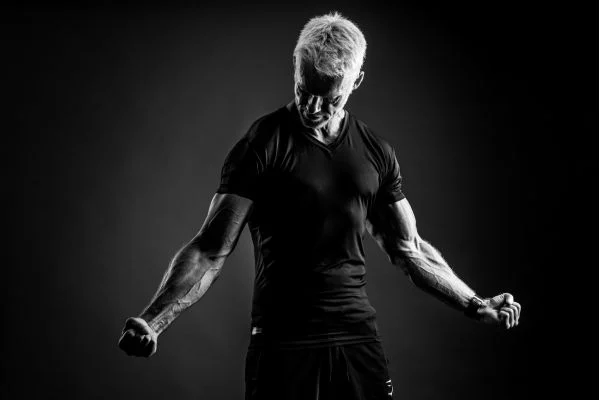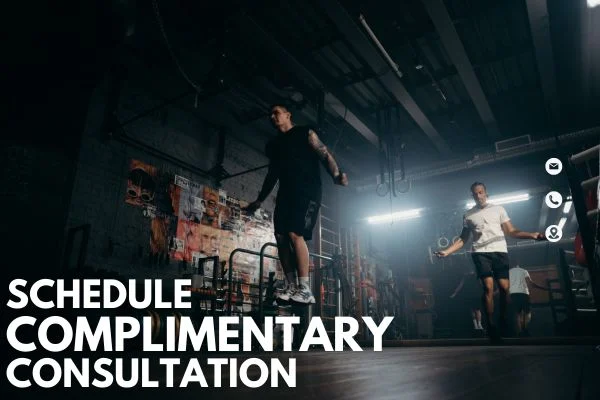Introduction
The reason most fitness programs fail is that they only focus on one of the five essential components of fitness. A diet-only approach, for example, reduces metabolism, which is the number one reason people hit plateaus or regain weight after initial success.
This article outlines the five key components of fitness and how to create a balanced program that incorporates them all.
1. Cardio Respiratory Activity
Energy Balance and Cardio
According to the Laws of Thermodynamics, our bodies convert food into energy. If we use more energy than we consume, our bodies draw on stored fat for fuel. Cardio is one of the most common methods to increase caloric expenditure, but more is not always better.
Too much cardio can lead to:
- Muscle loss
- Glycogen depletion
- Lowered metabolism
Most gym equipment includes a Target Heart Rate (THR) chart. This is a helpful guide to optimise workouts for fat loss or cardiovascular health.
Target Heart Rate (THR) Zones
Use this formula to calculate THR:
Karvonen Formula:
206.9 – (0.67 × age)
– resting heart rate
× desired intensity zone (as a decimal)
- resting heart rate
= Target Heart Rate
Heart Rate Zones Explained:
- Healthy Heart Zone (50-60%) – 85% of energy used comes from fat
- Fitness Zone (60-70%) – still 85% fat usage
- Aerobic Zone (70-80%) – 50% fat usage, improves endurance
- Anaerobic Zone (80-90%) – 15% fat usage, increases strength and power
- Red Line (90-100%) – only train here with medical clearance
The Problem With a Cardio-Only Plan
Let’s consider “Jane,” who joins a gym and sticks only to the treadmill. She increases intensity over time and initially loses weight. But she soon hits a wall. Her time on the treadmill keeps growing, yet her results diminish. She’s losing muscle, which lowers her metabolism and increases her body fat percentage.
Solution: Incorporate all five components of fitness, not just cardio.
2. Proper Food Intake
Dieting Isn’t the Answer
Excessive dieting, like excessive cardio, leads to fat and muscle loss, reducing metabolism. Instead, focus on a healthy eating lifestyle.
Tips for Smarter Eating
- Consider your next few hours – Choose foods your body can convert to energy based on your planned activity.
- Watch the nutrient-to-calorie ratio – Less processed foods = more nutrition.
- Carbs before, protein after workouts –
- Before: more carbs, a little protein
- After: more protein, a little carbs
Whole food sources are always preferred over processed bars or shakes.
3. Vitamins and Supplements
Are Supplements Worth It?
While supplements can help fill gaps, studies suggest their benefits may come more from the healthy habits of the users themselves than the pills. If you choose to use supplements:
- Investigate ingredients, potency, and absorption
- Understand that supplements are not a replacement for a good diet
- Consult a professional before starting anything new
Note: Fireside Fitness does not promote or sell supplements. We refer clients to specialists for this area.
4. Resistance Training
Why Resistance Training Matters
- Builds muscle
- Increases metabolism
- Enhances joint stability and functionality
Yet many avoid weights due to fear or lack of knowledge.
Free Weights vs Machines
- Machines limit range of motion and may cause injury if used incorrectly
- Free weights recruit stabiliser muscles, improving balance and joint health
- Machines don’t mimic real-life movements as effectively as free weights
Trainer Tip: A knowledgeable personal trainer can teach proper technique and build your confidence.
Safe Lifting Rules
- 90-Degree Rule: Never load a joint past a 90-degree angle
- Shoulder presses: elbows shouldn’t drop below shoulders
- Chest presses: elbows shouldn’t drop below the bench
- Lunges and leg extensions: avoid bending the knee past 90 degrees under load
- Train to fatigue, not failure:
Overtraining causes injuries and burnout. Push yourself, but use common sense. - Never compromise form:
Poor form recruits smaller, weaker muscles and invites injury. - Recovery is critical:
Muscles grow during rest, especially while sleeping. Don’t skip recovery.
5. Professional Assistance
A professional trainer can help you:
- Balance all five fitness components
- Tailor your plan to your goals, needs, and limitations
- Monitor and evaluate your progress
- Keep you accountable and safe
How to Choose a Trainer
- Ask for credentials and references – and verify them
- Check certificate validity and accreditation – some online “certifications” are worthless
- Watch for red flags – No references? Likely no results.
Final Thoughts
To succeed in your fitness journey, you must build a program that includes:
- Cardio Respiratory Activity
- Proper Food Intake
- Vitamins and Supplement Awareness
- Resistance Training
- Professional Guidance
A balanced approach supports real, lasting change. Let your workouts be intelligent, your food purposeful, and your journey sustainable.





